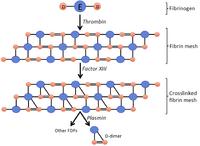
Photo from wikipedia
The link between plasma D-dimer levels and underlying malignancy has been established. How this translates in clinical practice as a marker of detection and prognosis of cervical cancer (CC) is… Click to show full abstract
The link between plasma D-dimer levels and underlying malignancy has been established. How this translates in clinical practice as a marker of detection and prognosis of cervical cancer (CC) is still unknown. This study compared the plasma D-dimer levels in women with and without CC and assessed the associations between plasma D-dimer levels and the stage and grade of CC. It was a comparative cross-sectional study of 65 women with histological diagnosis of CC and an equal number of age-matched cancer-free women enrolled at the University Teaching Hospital in Lagos, Nigeria. Participants’ sociodemographic and clinical data as well as venous blood samples for estimation of plasma D-dimer were collected for statistical analyses. A receiver operating characteristic (ROC) analysis is performed to select the cut-off value of plasma D-dimer for differentiating CC from non-cancer. There was a statistically significant difference in the median levels of plasma D-dimer of women with CC and their cancer-free comparison groups (3,120 (1,189–4,515) versus 210 (125–350) ng/mL; p = 0.001). A plasma D-dimer value of 543 ng/mL was chosen in a ROC analysis as the discriminatory cut-off to differentiate CC from non-cancer. There were significant associations between plasma D-dimer levels and the International Federation of Gynaecology and Obstetrics stage (p = 0.001) or grade (p = 0.001) of CC. The study, therefore, demonstrated the potential clinical usefulness of plasma D-dimer as a diagnostic and prognostic marker of CC.
Journal Title: ecancermedicalscience
Year Published: 2023
Link to full text (if available)
Share on Social Media: Sign Up to like & get
recommendations!